Exploring Musical Influence and Genre Boundaries
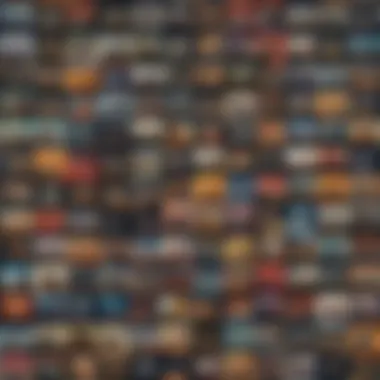

Intro
In contemporary music, the boundaries between genres appear increasingly fluid. Artists weave together a tapestry of sounds from diverse traditions, often creating unique blends that defy conventional categorization. The significance of this development extends beyond mere sonic experimentation; it taps into deeper cultural currents and artistic expressions that shape how we understand music today.
This exploration aims to unpack these complex relationships, focusing on how individual artists navigate their influences. Through examining the biographies, major influences, and shared societal experiences that shape their work, we gain insight into the shifting landscape of musical genres. Furthermore, we will delve into specific songs, analyzing their thematic content, lyrics, instrumentation, and composition, thereby providing a comprehensive view of how today's musicians function within an interconnected framework of influence.
Understanding the fluidity of musical genres is essential to grasp the cultural dialogues that contemporary artists engage with.
The journey begins with the profiles of key artists whose work exemplifies the intricate interplay of influences, serving as case studies in the evolving definitions of musical categories.
Preamble to Unblurring Musical Lines
Understanding the concept of unblurring musical lines is crucial in today's rapidly evolving music landscape. The blending of various genres has led to a rich tapestry of sounds and styles, allowing artists to express themselves with greater freedom. This movement is not only about integration but also about trading influences among cultures, periods, and communities.
As genres become less rigid, artists can explore innovative combinations of elements from different musical traditions. This creates a more inclusive environment where creativity flourishes. The result is a diverse array of music that speaks to varied audiences, rejuvenating traditional forms while also paving the way for new ones.
Defining Unblurred Lines
Unblurred lines refer to the diminishing barriers between musical genres, resulting in a fluid exchange of ideas and styles. Gone are the days when music was strictly categorized, rigidly confined to a particular genre. Today, we see artists incorporating aspects from jazz, pop, hip-hop, electronic, and traditional music into their work. This hybridization fosters originality, making music more dynamic and exciting.
For instance, artists like Billie Eilish blend pop with elements of electronic and indie music, creating a distinctive sound that defies typical classification. Similarly, Lil Nas X crossed the boundaries of country and rap, spawning discussions about genre definitions.
The unblurring of musical lines is a response to the needs of a global audience that craves variety and novelty. It invites listeners to experience music in a more holistic way, appreciating the complexity of influences behind each piece.
Historical Context of Musical Genres
To fully grasp the phenomenon of unblurring musical lines, it is essential to consider the historical context of musical genres. Music has always been a reflection of social, political, and cultural currents. For example, the emergence of jazz in the early 20th century was deeply intertwined with the African American experience in the United States. It drew from a myriad of influences, including blues, ragtime, and European musical traditions.
Furthermore, the globalized nature of today's music industry has accelerated the blending of genres. The advent of the internet and streaming services has allowed artists to access an endless array of influences from around the world. Genres that once remained isolated now interact and evolve. The cultural exchange seen in contemporary music signifies a shared human experience that transcends geographical boundaries.
In summary, the unblurring of musical lines invites us to consider how evolving definitions reflect our society. By examining each genre's history, we garner insight into how artists today harness a multitude of influences to create unique sounds. Through this understanding, we can appreciate the richness of today's musical landscape.
The Evolution of Music Genres
The evolution of music genres serves as a vital pillar in understanding musical influences. Examining this topic reveals how the categories we often take for granted are not static. They change and adapt in response to cultural, social, and technological shifts. As music continues to evolve, so do the lines separating genres, leading to richer musical landscapes. Artists today navigate these transformations, borrowing elements from different genres to create new forms of expression. This blending brings a philosophical consideration to what music truly represents and how it should be categorized.
From Classical to Contemporary
The transition from classical to contemporary music represents a significant chapter in the evolution of genres. Classical music, rooted in formal structures, established foundational principles for rhythm, melody, and harmony. It set the stage for later developments by creating a canopy under which genres could grow. Composers like Johann Sebastian Bach and Ludwig van Beethoven remain influential even in today’s music. Their works are not just historical artifacts; they are living influences seen in various forms ranging from pop to rock.
As we transitioned into the 20th century, genres began to diversify radically. The emergence of jazz, blues, and rock and roll indicated a departure from the rigid conventions of classical music. These genres incorporated improvisation and individual expression, marking a pivot to musical fluidity. Artists such as Louis Armstrong and Chuck Berry paved the way for generations who would question existing norms. Modern genres like hip-hop and electronic music further illustrate this deviation. The use of technology and sampling in hip-hop, for example, illustrates the collapsing boundaries of musical genres. Thus, the journey from classical to contemporary music reflects an ongoing dialogue between tradition and innovation, a dance that continues today.
Fusion Genres and Collaborative Projects
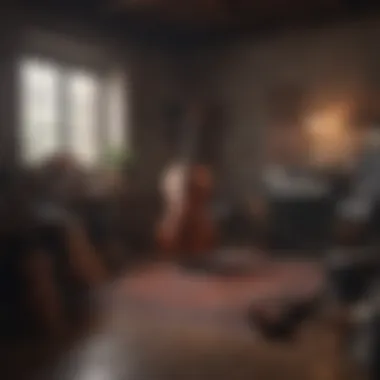
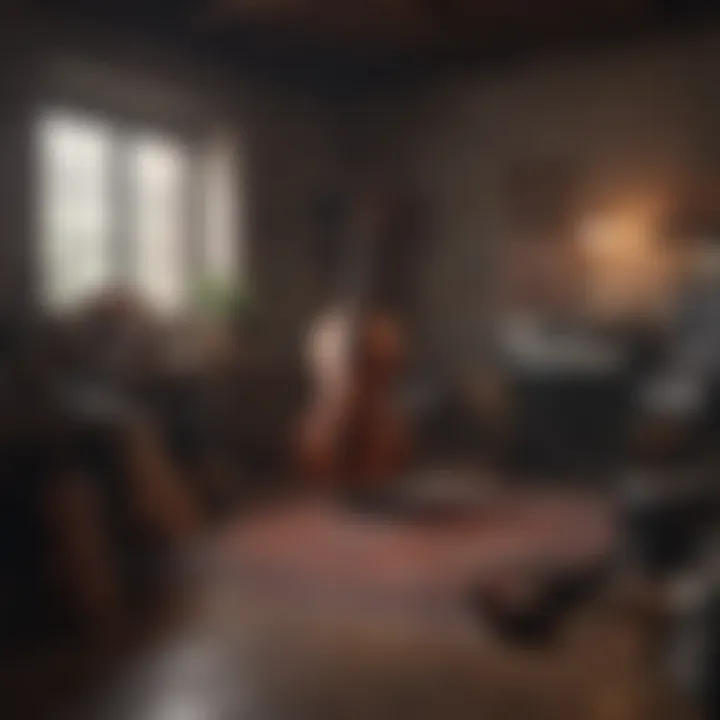
Fusion genres and collaborative projects embody the essence of contemporary musical evolution. They signify an openness to experimentation and a willingness to break down barriers. In this landscape, artists blend various influences, resulting in distinct hybrid styles. For instance, genres like jazz fusion mix elements from jazz with rock, funk, and world music traditions. This crossover symbolizes the embrace of diversity in musical expression.
Collaborative efforts further encourage the unbinding of genres. Highly recognized projects, such as the collaboration between Daft Punk and Pharrell Williams, illustrate this trend. Their track "Get Lucky" merges electronic elements with funk, bridging multiple styles into a cohesive sound.
Moreover, the impact of globalization cannot be underestimated. Musicians from different countries and backgrounds create unique sounds by integrating disparate genre influences. This fusion enhances accessibility and appreciation across cultures.
Robust platforms also provide space for these collaborative projects to thrive. The democratization of music production through digital tools enables independent artists to experiment without major label constraints. Thus, fusion genres and collaborative projects embody the shift away from rigid musical categorizations, allowing for a more intricate and vast musical tapestry.
Influences Shaping Today's Music
The influences shaping today's music are vital to understanding the current landscape of artistic expression. In contrast to the rigid genre classifications of the past, modern music thrives on a rich tapestry of inspiration and collaboration that reflects diverse experiences and cultures. The exploration of these influences sheds light on how today's artists are not merely creators but also curators who redefine boundaries in their work. They draw from a wide spectrum of sources, reflecting the complexities of contemporary society.
Cultural Influences on Music Creation
Cultural factors play a significant role in the creation of music. Contemporary artists are constantly inspired by their surroundings, traditions, and societal changes. The blending of various musical styles often results in unique soundscapes that resonate with wider audiences. Strong cultural narratives sometimes serve as a backdrop for the artist's intentions. For example, hip-hop often addresses themes of social justice, empowerment, and systemic inequality, revealing the societal undercurrents that artists grapple with in their lyrics and beats.
In addition, musicians often incorporate elements from their native cultures. Beyoncé, for instance, infuses African heritage into her work, highlighting themes of identity and community. Other artists, such as Bad Bunny, embrace Latin influences, reshaping perceptions of genres like reggaeton and pop. This cultural cross-pollination allows for a wider representation of voices in music, challenging traditional narratives and contributing to an inclusive atmosphere.
"Music is a world within itself; it’s a language we all understand." – Stevie Wonder
Social Media and Emerging Trends
Social media has radically transformed the music industry. Platforms such as TikTok, Instagram, and Spotify have created new avenues for discovering and promoting music. These platforms encourage artists to experiment and connect with audiences authentically, bypassing some traditional gatekeeping. Emerging trends often stem from viral challenges or unexpected collaborations that captivate users, creating a direct feedback loop between artists and fans.
The influence of social media is profound. Songs can gain traction in days, altering the trajectory of an artist's career overnight. For instance, Lil Nas X's hit "Old Town Road" became a cultural phenomenon largely due to its viral spread on TikTok. Such platforms allow for genre-fluid interactions where eclectic styles blend, and artists can resonate globally within a short time frame.
Moreover, trends shaped by social media often lead to a revival of older genres or styles, demonstrating how the cyclical nature of music persists. The ease of sharing and remixing content fosters a fluid exchange of ideas, encouraging ongoing innovation in music.
Understanding these influences highlights not just the act of creating music, but the environment artists operate within. It showcases a dynamic landscape where cultural inspirations and digital platforms coalesce, driving the evolution of musical expression.
Case Studies of Influential Artists
Examining the contributions of key musicians offers valuable insights into the notion of genre fluidity. These case studies reflect not just personal journeys but also broader cultural movements. Artists often reshape the musical landscape, pushing boundaries and blending styles. Their experiences illustrate the dynamic interplay between tradition and innovation.
Artists Breaking Genre Norms
Many artists challenge conventional genre definitions through their unique styles. A prime example includes Prince, who effortlessly merged rock, funk, pop, and R&B. His career highlights how a willingness to defy categorization can lead to enduring impact. Similarly, David Bowie took genre-bending to new heights. Bowie's exploration of glam rock, soul, and electronic music showcased an adaptable identity that resonated across generations.
Creative risks can foster new sounds that resonate with diverse audiences. The genre-defying artists stimulate conversations about identity and culture. For instance, Billie Eilish incorporates elements of pop, electronica, and indie in her music, appealing to multiple demographics. This trend emphasizes that listening habits are evolving, as fans actively seek out eclectic sounds.
"Artists who break genre norms create an inclusive musical space, encouraging listeners to broaden their tastes without boundaries."
The Role of Women in Genre-Crossing
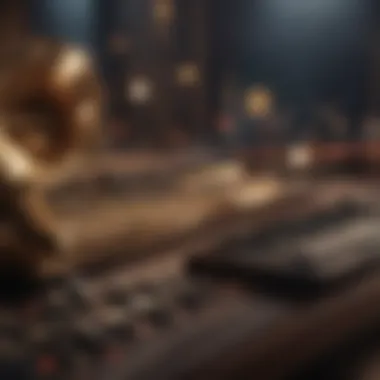
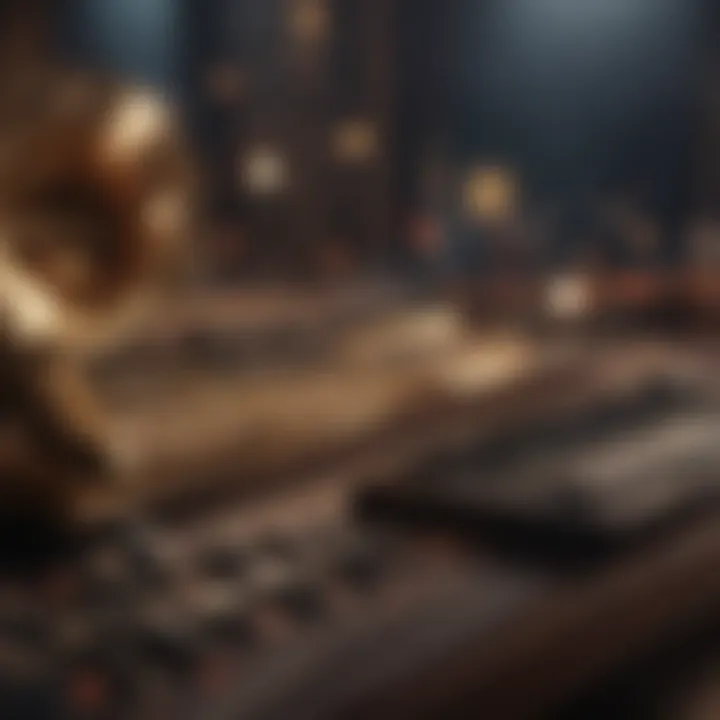
Women musicians have played a vital role in genre-crossing, often challenging stereotypes and asserting their presence in male-dominated areas. Notable figures like Björk blend pop, electronic, and avant-garde styles, fostering a greater appreciation for experimental music. Adele also exemplifies how women contribute to genre fluidity. Her blend of soul and contemporary pop have garnered global recognition.
Furthermore, female artists have embraced various musical styles while addressing social issues. For example, Lizzo combines hip-hop and pop while advocating for body positivity. This intersection of genres with activism showcases the multifaceted nature of modern music.
The contributions of women help shape the perception of genres and inspire future generations of musicians. Their work promotes diversity and inclusivity, enriching the music landscape.
Technology's Impact on Music Creation
The intersection of technology and music creation has catalyzed significant transformations within the industry. These innovations have not only enabled musicians to experiment with sound and production but also democratized access to music-making tools. The rise of digital innovation has reshaped how artists conceptualize their work, allowing a diverse range of voices to emerge in a saturated market. Therefore, understanding this impact is essential to grasp the current state of musical expression.
Digital Innovation in Music Production
Digital tools have revolutionized music production. From software like Ableton Live and Pro Tools to hardware synthesizers, musicians today have unparalleled resources to create music. This democratization means that aspiring artists no longer need to be in a high-end studio to produce quality work. They can create within their homes using laptops and affordable interfaces.
This shift has encouraged experimental sound designs. Artists play with genres and styles, breaking the traditional molds. Electronic music, for instance, layers textures and rhythms in unique ways, often resulting in unexpected genre hybrids. Additionally, software instruments allow for complex layering and manipulation of sounds that would be challenging or impossible to achieve with traditional instruments alone.
Moreover, collaboration has become more accessible, with platforms like Splice facilitating the sharing of samples and ideas. Musicians from different backgrounds can work together virtually, leading to cross-genre projects that reflect diverse influences.
"Digital innovation has removed barriers that once confined musicians to specific genres or styles. Now, creative expression knows no bounds."
Streaming Services and Genre Fluidity
Streaming services have fundamentally altered how music is consumed and categorized. Platforms like Spotify and Apple Music provide vast libraries where listeners can explore various genres effortlessly. This accessibility fosters genre fluidity, allowing fans to encounter and enjoy music that crosses traditional boundaries.
The algorithms employed by these platforms often promote a mix of genres based on user preferences. This exposure not only broadens listeners' tastes but also influences artists to incorporate various elements into their work. For example, an artist might blend pop with hip-hop or classical with electronic, reflecting the fluid nature of today's music landscape.
Additionally, playlists curated by these services can lead to unexpected trends. For instance, the viral success of a song may encourage more artists to experiment with similar styles, driving genre evolution. The implications of this trend are profound; as music categories become less distinct, the definition of what constitutes a genre continues to evolve.
Cultural Significance of Unblurred Lines
The cultural significance of unblurred lines in music relates to how musical genres can transcend traditional boundaries. This phenomenon reflects the changing nature of society itself, showcasing diversity, acceptance, and the ability to adapt. When artists blend genres, they often mirror the complex identity of contemporary culture. This reflects various influences such as race, class, and personal experience.
Musicians today are not just creators but also commentators on what is happening in the world. Their work often resonates with social issues, allowing listeners to find connection and solace within the music. For example, the incorporation of hip-hop elements into country music, as seen with artists like Lil Nas X, demonstrates how genres can converge, challenging preconceived notions of musical identity. This signifies a broader acceptance of varying cultural expressions.
Furthermore, unblurred lines promote the idea of creativity. Artists can draw inspiration from anywhere, leading to innovative sounds and concepts. This ultimately enriches the music landscape, fostering an ecosystem of collaboration and experimentation.
"Music is a universal language that speaks across boundaries. Artists today are redefining what it means to be a musician."
Music as a Reflection of Society
Music serves as a powerful mirror to society. The themes and narratives found in songs often reflect societal issues, emotions, and values. For instance, the rise of socially conscious rap highlights racial inequality and systemic injustices. Artists like Kendrick Lamar and J. Cole use their platforms to articulate the struggles faced by marginalized communities. Such music signals awareness of socio-political landscapes, creating dialogue among listeners.
Moreover, the blending of various genres enables a conversation between cultures. When artists take elements from different traditions, they not only honor those influences but also invite discussions on cultural heritage and evolution. As a result, music becomes a tool for social change and cultural understanding, emphasizing the relevance of communal experiences.
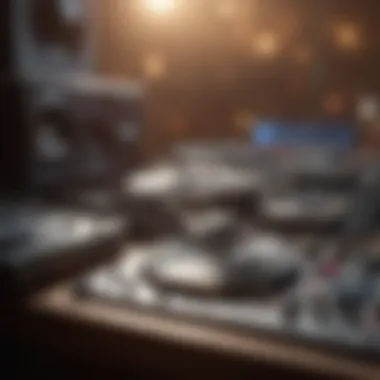
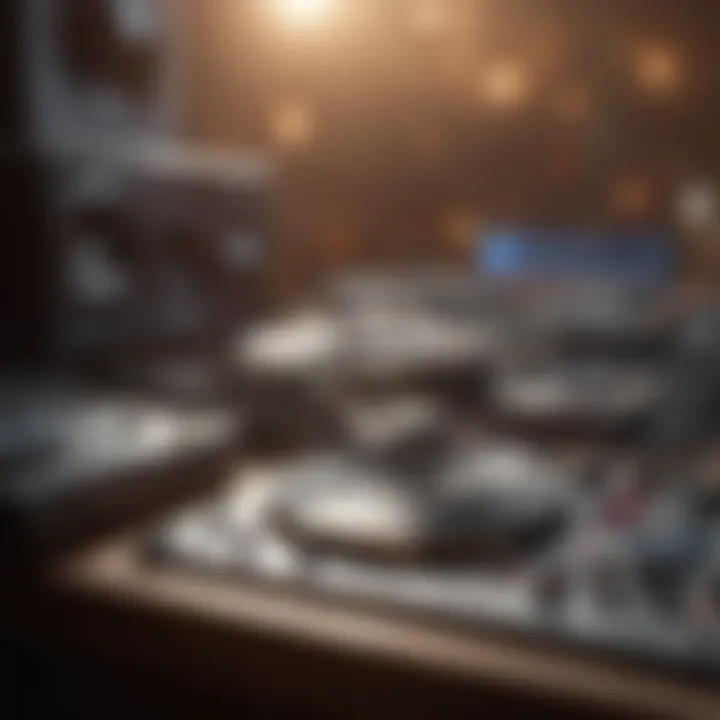
Unblurred Lines in Fostering Inclusivity
Inclusivity in music is increasingly highlighted through unblurred lines. When artists cross genre boundaries, they often welcome influence from cultures and communities outside their own. This leads to greater representation and understanding of diverse perspectives. Artists like Shakira and Bad Bunny, for example, showcase the rich tapestry of Latin music alongside pop and reggaeton influences, broadening their reach and impact.
This trend also benefits audiences by providing a richer listening experience. With a wider array of musical styles, listeners can engage with sounds that reflect their own identities or introduce them to new cultures. The maximization of inclusivity ultimately produces a more vibrant and diverse musical environment.
Exploration of Thematic Elements
Thematic elements in music play a pivotal role in how artists communicate their ideas and reflect their experiences. In this exploration, we will delve into the significant aspects of lyricism and visual performance art influences. These elements not only shape the content of music but also affect how audiences connect with the art itself.
Lyricism Across Genres
Lyricism serves as a crucial bridge between the artist and the listener. It offers insights into the artist's thoughts and emotions while simultaneously providing a narrative framework that can transcend genre limitations. Today, we see artists from various genres experiment with their lyrics, fusing lyrical styles from hip-hop, rock, pop, and more. This convergence creates unique storytelling methods that resonate across diverse audiences.
The importance of lyricism can be categorized into several key considerations:
- Authenticity: Lyrics often reflect personal stories, struggles, and triumphs. This authenticity creates a stronger connection with the audience.
- Cultural Commentary: Many artists use their lyrics to comment on societal issues, allowing for a wider discussion beyond music itself.
- Innovation: Merging lyrical techniques from different genres can push the boundaries of expression and creativity.
For example, artists like Kendrick Lamar blend intricate rhyme schemes from hip-hop with the melodic elements of R&B, expanding the emotional reach of their work. This underscores the adaptability of lyrical styles as they evolve across genres.
"The act of writing lyrics is an exploration of personal truth and cultural identity, often revealing the layers beneath genre silos."
Visual and Performance Art Influences
Visual and performance art have an undeniable effect on the music experience. As artists seek to engage their audiences fully, they increasingly incorporate elements of visual storytelling and expressive performance into their work. This integration serves not only to enhance the listener's experience, but also to make powerful statements about identity, societal norms, and personal journeys.
Consider the following aspects of visual and performance art influences in music:
- Stage Design: Elaborate stage setups can reflect the themes of a musical work, creating an immersive environment that deepens the emotional connection.
- Fashion and Aesthetics: The visual representation of an artist—through style, music videos, and album art—influences audience perception and often becomes iconic. Artists like Lady Gaga have utilized fashion as a potent form of self-expression and commentary.
- Multimedia Experiences: Today’s concerts often blend live performances with video art, adding layers of meaning to songs and creating a holistic experience for the audience.
By exploring these thematic elements, we gain a clearer understanding of how contemporary music artists blur traditional boundaries and create new spaces for expression. This blend not only elevates music but also invites listeners into deeper dialogues about art and culture.
Finale: Future of Musical Boundaries
Anticipating Trends in Music Creation
Emerging trends are already evident in the music creation landscape. The rise of social media platforms, such as Facebook and Instagram, plays a critical role in how artists promote their work. More than ever, artists are able to directly engage with their audience, which begins even before the release of new music. This kind of interaction fosters a sense of community and collaboration, impacting the sound and substance of music itself.
Additionally, technology continues to transform production techniques. Tools like Ableton Live and FL Studio democratize music creation, allowing anyone with a computer to produce professional-quality tracks. As a result, diverse voices from various cultural backgrounds are contributing to an array of new sounds and genres that cross traditional boundaries.
Finally, as globalization increases, artists are likely to draw on influences from a variety of cultures. The fusion of hip-hop, jazz, and traditional music from all over the world illustrates how genres can interact and evolve based on place and perspective.
The Lasting Legacy of Unblurred Lines
The legacy of unblurred lines will undoubtedly shape future generations of musicians and listeners. The current landscape mitigates strict genre definitions, opening avenues that facilitate inclusivity and broad participation in music culture. As students of music observe these shifts, they will find that their explorations can be limitless.
In addition, the cultural impacts reaching beyond music foster a more profound understanding of identity and expression. The blending of styles allows artists to contextualize their unique experiences within the broader narrative of contemporary society. This resonance transcends personal stories and establishes connections that redefine collective engagement with music.
"As artists break free from conventional genre constraints, they invite us to rethink our relationship with music itself."
In summary, the future of musical boundaries is not merely about the music that will come but the conversations, innovations, and communities that arise as a result. Artistic expression thrives in fluidity and openness, making way for new trends that will influence the creators of tomorrow.







